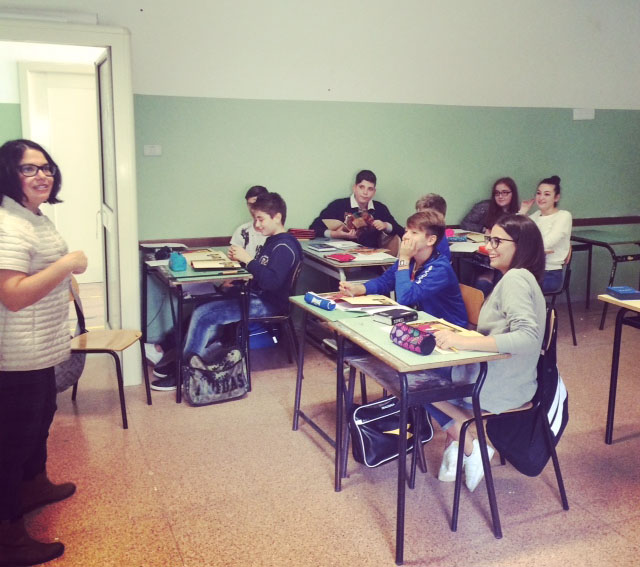 Associate Professor of Education and Child Development Ivannia Soto is spending part of her sabbatical year in Italy, where she's working with ESL (English as a Second Language) teachers at Scuola Media Statale Galileo Galilei di Arienzo and Scuola Elementare di Arienzo. An expert in language acquisition, Soto is the Executive Director of Whittier College's Institute for Culturally and Linguistically Responsive Teaching (ICLRT.)
Associate Professor of Education and Child Development Ivannia Soto is spending part of her sabbatical year in Italy, where she's working with ESL (English as a Second Language) teachers at Scuola Media Statale Galileo Galilei di Arienzo and Scuola Elementare di Arienzo. An expert in language acquisition, Soto is the Executive Director of Whittier College's Institute for Culturally and Linguistically Responsive Teaching (ICLRT.)
Soto and Stanford University's Linda Carstens have developed units of study for elementary and middle school, and purchased instructional materials that allowed them to model how to teach language contextually, instead of merely grammatically and in isolation. ESL teachers in Italy observed the units taught Soto and Carsten and then discussed the methods that were used.
Before instruction began, Soto conducted interviews, classroom observations, and led meetings, in order to determine best practices from the educators and administrators in Italy. Some of the best practices that emerged from Italian instruction were that second language instruction begins in elementary school in Italy (whereas in the U.S. it begins in high school), and that classroom sizes remain relatively small, with 15 students per teacher at the elementary level, and 25 students per teacher at the middle school levels.
From the model lessons conducted by Soto and Carstens, teachers and administrators realized that their students needed more opportunities for practicing a new language orally, and that this was possible via literature-based lessons. They also realized that more professional development was needed to learn how to develop units that are contextualized and holistic. Each of the Italian schools will keep the instructional materials, purchased with a faculty development grant, so that teachers can build upon the units that were created.